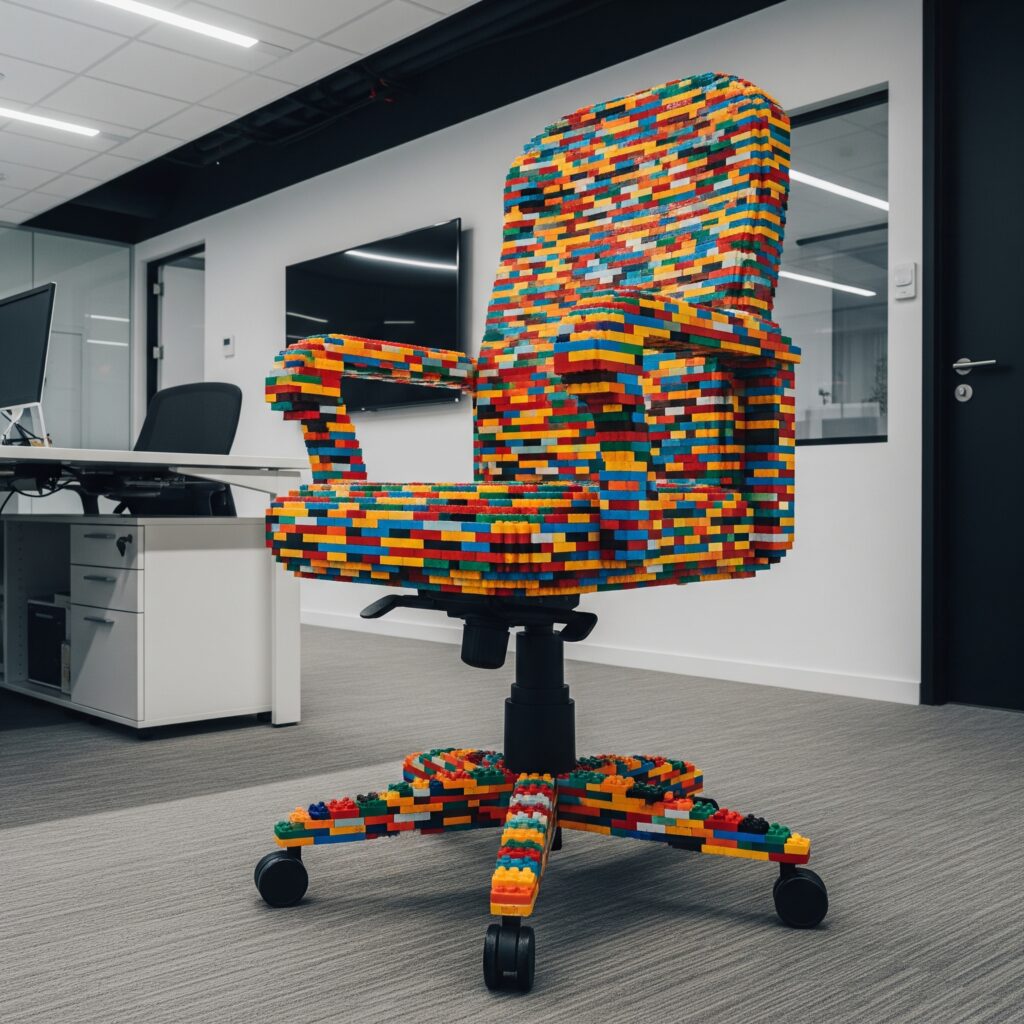Building a Better Office (With or Without Lego)
Let’s all take a deep breath and marvel at the fact that, five years after a global pandemic sent us all home in our pajamas, we’re still arguing over where people should work. The debate rages on: office or remote? Team commute or team couch? But here’s a twist you probably didn’t expect—returning to the office isn’t just good for mentorship, collaboration, and avoiding awkward Zoom interruptions from your cat. It’s also better for the planet.
Yes, according to Gensler and some very serious brains at MIT, your cozy home office with its always-on air conditioning, vintage desk lamp, and three-ring circus of energy inefficiencies is actually a carbon hog. Turns out heating, cooling, and lighting an entire house for one person to “circle back” on emails all day is far less efficient than doing it for 150 coworkers in a properly designed, professionally operated office. Who knew?
This is great news for the contract furnishings industry, which now gets to slap a sustainability sticker on every conference room and lounge chair. The open office may have killed our attention spans, but hey—at least it’s helping save the earth. Now if we could just do something about the carpet tile.
And in an entirely different but somehow thematically adjacent corner of the design world, researchers at Carnegie Mellon have built something called LegoGPT. It’s exactly what it sounds like: a generative AI model that turns text prompts into buildable, structurally sound Lego creations. Want to build an “hourglass-shaped guitar” out of bricks? Done. A toy chair? On brand. A metaphor for late-stage capitalism made entirely out of yellow bricks? Give them time.
While the CMU team insists this is just a fun tool for hobbyists (for now), they’re already hinting at real-world applications in product and architectural design. Which means the furniture industry may soon face a generation of clients who grew up designing their dream office with 400 Lego bricks and a prompt like “Scandinavian lounge for introverts with good lighting.”
Put the two stories together, and here’s the upshot: The office isn’t going away—it’s evolving. Sustainability, creativity, and a little AI-powered imagination are reshaping how we work and how we design the places we work in.
So here’s a free idea: someone please start working on Task Chair GPT—because if Lego can do it, surely any number of chair makers can, too.
